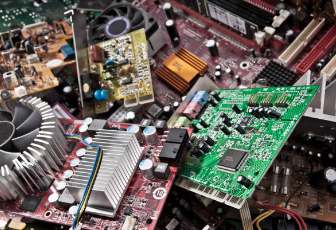
In the realm of e-waste management, one name stands out as a relentless advocate for environmental responsibility and social justice: Jim Puckett. With his pioneering work at the Basel Action Network (BAN), Jim has spent over 30 years fighting against toxic waste and its detrimental impact on communities and the environment.

The recycling of electronic waste, commonly known as e-waste, poses a big challenge due to the complex composition and hazardous additives present in the plastics derived from discarded electronic devices. However, researchers at Nanyang Technological University, Singapore (NTU Singapore) have found an exciting solution.

Have you ever taken a moment to count the number of old mobile phones tucked away in a drawer at your house? It's a common habit for many of us to either accumulate or dispose of old electrical products instead of repairing them, resulting in a rapidly increasing pile of electronic waste.

Have you ever wondered what happens to your old electronic devices after you dispose them off? And what impact do they have on the environment and our health? The increase in the generation of e-waste poses a substantial threat to the environment and human health worldwide. It’s a global challenge that requires immediate and decisive action.

India is witnessing two important developments: an increased impetus for transitioning from fossil fuel-based energy to renewable energy and curbing reliance on China, and establishing its dominance in solar power. That explains India’s ambitious goal of generating 280 gigawatts (GW) of electricity from solar energy. Recent statistics tell us that India is sincerely pursuing its ambition, with the country’s module manufacturing capacities exceeding 39 GW at the end of September 2022.

Our world is fast becoming digital, and electronic gadgets have become an integral part of our daily lives. There is no denying the fact that technology has revolutionized the world. From smartphones and laptops to washing machines and dishwashers, these devices have made our lives more efficient and comfortable. We eagerly wait for the latest release of our favourite gadgets, rushing to sell off our old ones for the latest model. But do you know the amount of e-waste generated from this constant upgrading of gadgets, and keeping up with the latest trends and advancements?

The rapid pace of technological advancement and the increasing trend of consumerism has led to a growing volume of e-waste worldwide, with a projected amount of 53.6 million metric tons generated in 2019 and expected to rise to 74.7 million metric tons by 2030, according to ‘The Global E-waste Monitor 2020’.

Residents of Seelampur are silently becoming collateral damage in the fight to deal with E-waste. India might be moving toward a larger change in the world but are we moving forward? Would the people feel the same if they see the Seelampur for themselves? The labyrinth of time has not only trapped the future of the place but also of the kids there. While working on the big agenda will we lose this place to E-Waste?

The awareness regarding e-waste and its consequences is something that has only been recently kindled in the public consciousness. The long overdue conversations regarding the environmental and human impacts of e-waste are finally happening. However, one aspect of e-waste that is relatively less well-known is the idea of 'urban mining.' But, before we get into the notion of urban mining, it's important to understand the repercussions of geological mining, often known as traditional mining.

The article involves details of health hazards involved in recycling of E-waste without any safety measures.